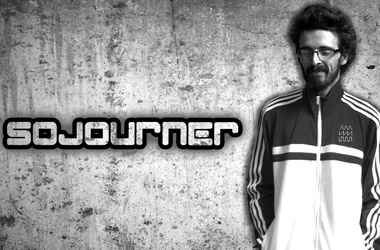Though he only took to the stage two years ago, Northampton electronic artist Sojourner (aka Nur Habib Tiven) has been preparing for a career in music almost his entire life.
“According to my parents, I started beat-boxing as a little baby in my highchair,” says Tiven. “I was actually pretty good. My dad is a musician and ran a music store at the time, so he brought home a little drum set for me to beat on long before I could reach the pedals. I’ve been a drummer ever since. I also play guitar, oud and mandolin, and I’ve had to learn piano because I use a keyboard to trigger all the MIDI sounds I use in my productions now.”
Starting out in a series of bands, Tiven turned to electronic music out of frustration upon realizing it would be easier to start producing material himself instead of working with others. Taking the name Sojourner after an encounter with the Sojourner Truth statue in Memorial Park in Florence, he now composes, arranges, engineers and records his own electronic dance music, which he describes as melodic-cinematic-future-funk that is also upbeat and energized.
Tiven also puts his skills to use by teaching drums and leading a Brazilian samba ensemble at a music therapy school for musically gifted autistic kids and young adults. In his spare time though, the busy musician has been known to throw quite the party.
He says, “Honestly, my live show is more like a dance party with a DJ than a ‘live show.’ Basically I’m DJ-ing my own music live and tweaking the hell out of it.”
Next up for Tiven, who cites Sex/War, Louis Deluxe and local DJs Ahmed Samy and Megha as some of his favorite acts to work with, is the physical release of some of his music.
“I’m gearing up to finally get some CDs pressed—a little self-released EP called The Dust Rises—featuring probably seven or eight tracks of my most banging stuff and a bunch of cool artwork,” he says.
Completing such a project is only part of the equation. For Tiven, music holds a much greater importance and is more akin to a philosophy, which he hopes to share with as many people as possible.
“I regard music and dance as sacred technologies for healing, building community, celebration, ritual, grief, and in traditional societies there is often a very intentional use of these technologies for the power of good,” he says. “In our society we tend to have them as part of entertainment and party culture, but still, I think the sacred aspect is there, particularly when people are dancing together. I’m very interested in putting this intention into my music and into events that I organize, because I think there’s so much power in music and dance. We have it. We just usually don’t acknowledge or tap into the fullness of what it could be in our culture.”
For more information on Sojourner, please visit www.soundcloud.com/sojournermusic, www.sojournermusic.net and www.facebook.com/sojomusic.



